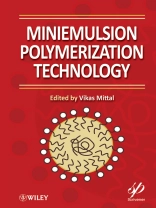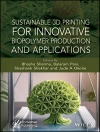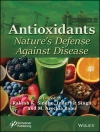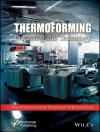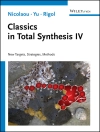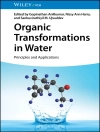Explains miniemulsion technology and techniques and why they have many distinct advantages over the conventional emulsion polymerization technology
Miniemulsion Polymerization Technology comprises 10 papers by many of the world’s experts on the subject. It summarizes the recent advances in miniemulsion polymerization technology including the advances on the selection of surfactants and co-surfactants, the expansion of miniemulsion technology in various polymers and co-polymer systems, and the use of miniemulsion polymerization for the synthesis of advanced polymer particle morphologies.
There have been a large number of texts on emulsion and other forms of polymerization methods, but miniemulsion polymerization, though it provides unique routes for polymer particle synthesis, has been neglected.
This edited volume:
- Details the use of miniemulsion polymerization in encapsulation, core shell functional particles, nitroxide mediated polymerization, atom transfer radical polymerization or radical addition fragmentation chain transfer polymerization, to generate advanced polymer nanoparticles or organic-inorganic composite particles
- Examines the wide spectrum of commercial possibilities of miniemulsion polymerization
- Provides both introductory material as well as deep insights into the synthesis of polymer particles
Содержание
Preface.
1 Miniemulsion Polymerization: An Overview (V. Mittal).
1.1 Introduction to Polymerization Techniques.
1.2 Emulsion and Miniemulsion Polymerization.
1.3 Properties of Miniemulsion Polymerization.
1.4 Controlled Miniemulsion Polymerization.
2 Multi-Functional Stabilizers in Miniemulsion Polymerization (Alain Durand).
2.1 Introduction.
2.2 Stability of Initial Monomer Droplets.
2.3 Stabilizers and Polymerization Processes.
2.4 Conclusion.
3 Structured Copolymer Particles by Miniemulsion Polymerization (V. Mittal).
3.1 Introduction.
3.2 Styrene-Dodecyl Methacrylate/Stearyl Methacrylate.
3.3 n-Butyl Methacrylate-Crosslinking Monomers.
3.4 Vinyl Acetate-Butyl Acrylate.
3.5 Butyl Acrylate-(2-Methacryloxy)ethyl)trimethyl Ammonium Chloride.
3.6 Butyl Acrylate-Methyl Methacrylate-Vinyl Acetate.
3.7 Styrene-Acrylic Acid or 2-Aminoethyl Methacrylate Hydrochloride (AEMH).
3.8 Styrene-Butyl Acrylate.
3.9 Styrene-Butadiene Rubber.
3.10 Fluoroacrylate—Lauryl Methylacrylate—Methyl Methacrylate.
3.11 Polyurethane-Block-Polystyrene.
3.12 Alkyd-Acrylic.
3.13 Oil-Acrylate.
3.14 Urethane-Acrylic.
4 Encapsulation of Inorganic Nanoparticles by Miniemulsion Polymerization (Jacqueline Forcada and Jose Ramos).
4.1 Introduction.
4.2 Miniemulsion Polymerization in the Presence of Inorganic Nanoparticles.
4.3 Encapsulation of Silica Nanoparticles.
4.4 Encapsulation of Magnetite Nanoparticles.
4.5 Conclusions and Future Perspectives.
4.6 Acknowledgements.
5 Polymeric Nanocapsules by Interfacial Miniemulsion Polymerization (Guo-Rong Shan and Zhi-Hai Cao).
5.1 Introduction.
5.2 Organic Nanocapsules by Inter facial Miniemulsion Polymerization.
5.3 Organic-Inorganic Hybrid Nanocapsules by Interfacial Miniemulsion Polymerization.
5.4 Conclusions.
6 Miniemulsion Polymerization of Vegetable Oil Macromonomers (Shelby F. Thames, James W. Razvlins, and Sharathkumar K. Mendon).
6.1 Introduction and Background.
6.2 Emulsion Polymerization of Alkyds and Vegetable Oils.
6.3 (Meth)acrylated Vegetable Oil Derivatives.
6.4 Vegetable Oil Macromonomers.
6.5 The Potential for Emulsion Polymerization of Model Saturated Monomers.
6.6 Nucleation Mechanisms.
6.7 Design of Thermosetting Latex Polymers.
6.8 Classifying Monomer Solubility for Macro and Miniemulsion Polymerization.
6.9 Soybean Acrylated Monomer Synthesis.
6.10 Miniemulsion Polymerization.
6.11 Conclusions.
7 Controlled/Living Radical Polymerization in Aqueous Miniemulsion (Catherine Lefay, and Julien Nicolas).
7.1 Introduction.
7.2 Controlled/Living Radical Polymerization in Bulk/Solution: General Considerations.
7.3 Nitroxide-Mediated Miniemulsion Polymerization.
7.4 Atom Transfer Radical Miniemulsion Polymerization 188
7.5 Reversible Addition-Fragmentation Chain Transfer Miniemulsion Polymerization.
7.6 Iodine Transfer Polymerization in Miniemulsion.
7.7 Conclusion.
8 Inverse Miniemulsion Polymerization of Unsaturated Monomers (Ignác Capek).
8.1 Introduction.
8.2 General.
8.3 Kinetic Studies.
8.4 Traditional and Nonconventional Inverse Latexes.
8.5 Controlled Radical Miniemulsion Polymerization.
8.6 Amphiphilic and Associating Copolymers.
8.7 Conclusion.
8.8 Acknowledgements.
9 Double Miniemulsion Preparation for Hybrid Latexes (R.Y. Hong, G. Liu, B. Feng, and H.Z. Li).
9.1 Introduction.
9.2 Hybrids via Mini-Emulsion Polymerization.
9.3 Double-Miniemulsion Formation.
9.4 Stability.
9.5 Characterization.
9.6 Applications.
9.7 Summary.
9.8 Acknowledgments.
10 Surfactant Effect in Miniemulsion Polymerization for Biodegradable Latexes (V. Soldi, B.G. Zanetti-Ramos, and E. Minatti).
10.1 Introduction.
10.2 Miniemulsion Polymerization of Biodegradable Latexes.
10.3 Mechanisms of Surfactant Protection of Colloidal Dispersions.
10.4 Effect of Surfactants on Miniemulsion Polymerization.
10.5 Final Remarks.
Index.
Об авторе
Vikas Mittal is a Polymer Engineer at BASF Polymer Research in Ludwigshafen, Germany. He obtained his Ph.D. in 2006 in Polymer and Materials Engineering from the Swiss Federal Institute of Technology in Zurich, Switzerland. He then worked as a materials scientist in the Active and Intelligent Coatings section of Sun Chemical in London, UK. His research interests include polymer nanocomposites, novel filler surface modifications, thermal stability enhancements, and polymer latexes with functionalized surfaces. He has authored more than 30 scientific publications, book chapters and patents.
